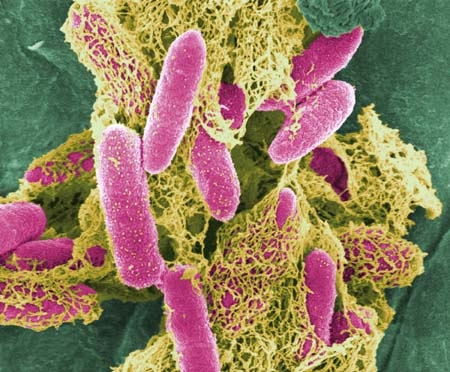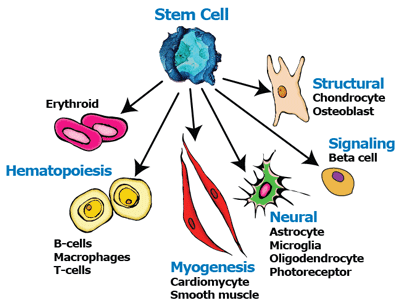Toys, books, cribs harbor bacteria for long periods, study finds

|
Numerous scientific studies have concluded that two common bacteria that cause colds, ear infections, strep throat and more serious infections cannot live for long outside the human body. So conventional wisdom has long held that these bacteria won’t linger on inanimate objects like furniture, dishes or toys.
But University at Buffalo research published today in Infection and Immunity shows that Streptococcus pneumoniae and Streptococcus pyogenes do persist on surfaces for far longer than has been appreciated. The findings suggest that additional precautions may be necessary to prevent infections, especially in settings such as schools, daycare centers and hospitals.
“These findings should make us more cautious about bacteria in the environment since they change our ideas about how these particular bacteria are spread,” says senior author Anders Hakansson, PhD, assistant professor of microbiology and immunology in the UB School of Medicine and Biomedical Sciences. “This is the first paper to directly investigate that these bacteria can survive well on various surfaces, including hands, and potentially spread between individuals.”
S. pneumoniae, a leading cause of ear infections in children and morbidity and mortality from respiratory tract infections in children and the elderly, is widespread in daycare centers and a common cause of hospital infections, says Hakansson. And in developing countries, where fresh water, good nutrition and common antibiotics may be scarce, S. pneumoniae often leads to pneumonia and sepsis, killing one million children every year.
Epigenetics enigma resolved

|
Scientists have obtained the first detailed molecular structure of a member of the Tet family of enzymes.
The finding is important for the field of epigenetics because Tet enzymes chemically modify DNA, changing signposts that tell the cell’s machinery “this gene is shut off” into other signs that say “ready for a change.”
Tet enzymes’ roles have come to light only in the last five years; they are needed for stem cells to maintain their multipotent state, and are involved in early embryonic and brain development and in cancer.
The results, which could help scientists understand how Tet enzymes are regulated and look for drugs that manipulate them, are scheduled for publication in Nature.
Testosterone-regulated genes may affect vaccine-induced immunity

|
A new study has identified a link between certain genes affected by testosterone and antibody responses to an influenza vaccine. The findings, published in Proceedings of the National Academy of Sciences, suggest that testosterone levels may partially explain why men often have weaker responses to vaccines than women. The study, led by researchers at Stanford University, was supported in part by the National Institute of Allergy and Infectious Diseases (NIAID), a component of the National Institutes of Health.
Previous research has shown that men typically experience more severe viral and other microbial infections than women, who tend to mount stronger immune responses to infections and vaccinations. In the new study, researchers analyzed the antibody responses of 53 women and 34 men of various ages to the 2008-2009 seasonal influenza vaccine. Compared to the men, the women produced antibodies that in laboratory tests could more effectively neutralize the influenza virus.
To explain this difference, the scientists searched for patterns in gene expression, or the degree to which specific genes are turned on or off. They found that men with weak vaccine responses tended to have high expression levels of a certain cluster of genes involved in the metabolism of lipids (fats). Previous studies have suggested that testosterone may regulate the expression of many of these genes. The researchers found that men with high levels of testosterone and elevated expression of the gene cluster had weaker antibody responses to the vaccine than women and men with low testosterone. These results suggest that testosterone may suppress immune responses to vaccines by altering expression patterns of specific genes, but further research is needed to determine the mechanism.
###
Transitioning epithelial cells to mesenchymal cells enhances cardiac protectivity

|
Cell-based therapies have been shown to enhance cardiac regeneration, but autologous (patient self-donated) cells have produced only “modest results.” In an effort to improve myocardial regeneration through cell transplantation, a research team from Germany has taken epithelial cells from placenta (amniotic epithelial cells, or AECs) and converted them into mesenchymal cells. After transplanting the transitioned cells into mice modelling a myocardial infarction, the researchers found that the epithelial-to-mesenchymal transition (EMT) was beneficial to cardiac regeneration by lowering infarct size. They concluded that EMT enhanced the cardioprotective effects of human AECs.
The study will be published in a future issue of Cell Transplantation but is currently freely available on-line as an unedited early e-pub at: http://www.ingentaconnect.com/content/cog/ct/pre-prints/content-ct1046Roy.
The authors noted that AECs have been shown to share characteristics of pluripotent cells that are able to transform into all other kinds of cells, and that their isolation and clinical-grade expansion of AECs is “relatively straightforward.”
“Our hypothesis was that EMT would improve cardiac regeneration capacity of amniotic epithelial cells by increasing their mobility and extracellular matrix modulating capacity,” said study corresponding author Dr. Christof Stamm of the Berlin Brandenburg Center for Regenerative Therapies, Berlin, Germany. “Indeed, four weeks after the mice were modeled with myocardial infarction the mice subsequently treated with EMT-AECs were associated with markedly reduced infarct size.”
Study finds axon regeneration after Schwann cell graft to injured spinal cord

|
A study carried out at the University of Miami Miller School of Medicine for “The Miami Project to Cure Paralysis” has found that transplanting self-donated Schwann cells (SCs, the principal ensheathing cells of the nervous system) that are elongated so as to bridge scar tissue in the injured spinal cord, aids hind limb functional recovery in rats modeled with spinal cord injury.
The study will be published in a future issue of Cell Transplantation but is currently freely available on-line as an unedited early e-pub at: http://www.ingentaconnect.com/content/cog/ct/pre-prints/content-ct1074Williams.
“Injury to the spinal cord results in scar and cavity formation at the lesion site,” explains study corresponding author Dr. Mary Bartlett Bunge of the University of Miami Miller School of Medicine. “Although numerous cell transplantation strategies have been developed to nullify the lesion environment, scar tissue - in basil lamina sheets - wall off the lesion to prevent further injury and, also, at the interface, scar tissue impedes axon regeneration into and out of the grafts, limiting functional recovery.”
The researchers determined that the properties of a spinal cord/Schwann cell bridge interface enable regenerated and elongated brainstem axons to cross the bridge and potentially lead to an improvement in hind limb movement of rats with spinal cord injury.
Is it safe for pregnant women to eat peanuts?

|
So long as they don’t have nut allergies themselves, pregnant women shouldn’t be afraid that eating nuts might trigger allergies in their child, according to a large new study.
In fact, when women ate nuts more than five times a month during pregnancy, their kids had markedly lower risk of nut allergies compared to kids whose mothers avoided nuts, researchers found.
“The take-home message is that the previous concerns or fears of the ingestion of nuts during pregnancy causing subsequent peanut or nut allergy is really unfounded,” Dr. Michael Young said.
Young is the study’s senior author and an attending physician in allergy and immunology at Boston Children’s Hospital.
Lactation consultants can boost breastfeeding

|
Having access to even a few hours with a professional specially trained to help women breastfeed may raise the number of women who start breastfeeding and stick with it, according to a new study.
Lactation consultants are certified through the International Board of Lactation Consultant Examiners and may work in hospitals, offices or public health programs.
Women in the new study who spent an average total of three hours with a lactation consultant were almost three times more likely to start breastfeeding their newborns and to still be breastfeeding three months later.
The American Academy of Pediatrics and the World Health Organization recommend exclusive breastfeeding for all babies’ first six months. In reality, at least 25 percent of babies in the U.S. are never breastfed at all, according to the Centers for Disease Control and Prevention.
Malaria drug target raises hopes for new treatments

|
Scientists have taken an important step towards new malaria treatments by identifying a way to stop malaria parasites from multiplying.
In a study published in Nature Chemistry, they show that blocking the activity of an enzyme called NMT in the most common malaria parasite prevents mice from showing symptoms and extends their lifespan. The team are working to design molecules that target NMT more potently, and hope to start clinical trials of potential treatments within four years.
A recent study estimated that 1.2 million people died from malaria in 2010. Although a variety of antimalarial drugs are available, some strains of the parasite are resistant to treatment. These strains are becoming more common, with treatment failures reported across multiple frontline drugs. If acute illness is cured, the parasite can remain dormant in the blood and return to cause illness later. Malaria vaccines have been researched intensively, but none have been introduced into clinical practice.
The new study shows that NMT is involved in a wide range of essential processes in the parasite cell, including the production of proteins that enable malaria to be transmitted between humans and mosquitoes, and proteins that enable malaria to cause long-term infection.
United States CDC announces an HPV vaccine recall

|
The United States Centers for Disease Control and Prevention (CDC) was informed by Merck on Monday that the pharmaceutical company planned to recall one lot of Gardasil [Human Papillomavirus Quadrivalent (types 6, 11, 16, and 18) Vaccine, Recombinant].
The CDC media statement released yesterday states that the recall is because a number of vials may contain glass particles as a result of breakage during the vaccine manufacturing process.
California girl to be kept on life support

|
A 13-year-old California girl declared brain dead after complications from a tonsillectomy should be kept on life support for the time being, a judge has ruled.
The family of Jahi McMath says doctors at Children’s Hospital Oakland wanted to disconnect life support after Jahi was declared brain dead on Dec. 12.
Friday’s ruling by Superior Court Judge Evelio Grillo came as both sides in the case agreed to get together and chose a neurologist to further examine Jahi and determine her condition. The judge scheduled a hearing Monday to appoint a physician.
The girl’s family sought the court order to keep Jahi on a ventilator. They left the courtroom without commenting.
UBC-VCH scientists use drug to repair rare birth defect

|
University of British Columbia and Vancouver Coastal Health scientists have developed a potential cure for a rare eye disease, showing for the first time that a drug can repair a birth defect.
They formulated the drug Ataluren into eye drops, and found that it consistently restored normal vision in mice who had aniridia (ANN-uh-ridee- uh), a condition that severely limits the vision of about 5,000 people in North America. A small clinical trial with children and teens is expected to begin next year in Vancouver, the U.S. and the U.K.
Aniridia is caused by the presence of a “nonsense mutation” - an extra “stop sign” on the gene that interrupts production of a protein crucial for eye development. Aniridia patients don’t have an iris (the coloured ring around the pupil), and suffer many other eye abnormalities.
Ataluren is believed to have the power to override the extra stop sign, thus allowing the protein to be made. The UBC-VCH scientists initially thought the drug would work only in utero – giving it to a pregnant mother to prevent aniridia from ever arising in her fetus. But then they gave their specially formulated Ataluren eye drops, which they call START, to two-week-old mice with aniridia, and found that it actually reversed the damage they had been born with.
Birth control at the zoo: vets meet the elusive goal of hippo castration

|
One method for controlling zoo animal populations is male castration. For hippopotami, however, this is notoriously difficult, as the pertinent male reproductive anatomy proves singularly elusive. Veterinarians from the Research Institute of Wildlife Ecology of the University of Veterinary Medicine, Vienna, and colleagues, have demonstrated a successful method for castrating male hippos. Their results are published in the journal Theriogenology.
Common hippopotami (Hippopotamus amphibius) are vulnerable to extinction in the wild, but reproduce extremely well under captive breeding conditions. Females can give birth to up to 25 young over their 40 year lifespan – evidently too many for zoos to accommodate. Captive populations of hippopotamus must therefore be controlled. Male castration is useful in this respect because it can simultaneously limit population growth and reduce inter-male aggression. However, documented cases of successful hippo castrations are scant. The procedure is notoriously difficult due to problems with anaesthesia and difficulties in locating the testes.
Physiological adaptations to life in the water
Hippos are well adapted to an aquatic lifestyle (indeed they are distantly related to whales and other cetaceans), and this is reflected in peculiar physical and physiological features. While whales have truly internal testes that remain in the abdomen at all times, hippos “hide” them in the inguinal canal, a passage in the frontal abdominal wall. Thus the testes are externally difficult to locate by sight or touch. A team supporting Chris Walzer from the Research Institute of Wildlife Ecology of the Vetmeduni Vienna as well as colleagues from three zoological institutions and the Leibniz Zoo for Zoo and Wildlife Research (IZW) evaluated surgical castration in ten adult common hippopotami held at various zoos. Walzer and colleagues had previously developed a successful hippo anaesthesia protocol, a challenge in itself, because delivery of sufficient anaesthetic is hampered by the hippo’s thick skin and dense subcutaneous tissue. Also, the anaesthetics can cause breathing irregularities and sometimes even death.
Parasitic DNA proliferates in aging tissues

|
The genomes of organisms from humans to corn are replete with “parasitic” strands of DNA that, when not suppressed, copy themselves and spread throughout the genome, potentially affecting health. Earlier this year Brown University researchers found that these “retrotransposable elements” were increasingly able to break free of the genome’s control in cultures of human cells. Now in a new paper in the journal Aging, they show that RTEs are increasingly able to break free and copy themselves in the tissues of mice as the animals aged. In further experiments the biologists showed that this activity was readily apparent in cancerous tumors, but that it also could be reduced by restricting calories.
“As mice age we are seeing deregulation of these elements and they begin to be expressed and increase in copy number in the genome,” said Jill Kreiling, a research assistant professor at Brown, and leader of the study published in advance online Dec. 7. “This may be a very important mechanism in leading to genome instability. A lot of the chronic diseases associated with aging, such as cancer, have been associated with genome instability.”
Whether the proliferation of RTEs is exclusively a bad thing remains a hot question among scientists, but what they do know is that the genome tries to control RTEs by wrapping them up in a tightly wound configuration called heterochromatin. In their experiments, Kreiling and co-corresponding author Professor John Sedivy found that overall, the genomes of several mouse tissues become more heterochromatic with age. But they also found, paradoxically, that some regions where RTEs are concentrated became - loosened up instead , particularly after mice reached the 2-year mark (equivalent to about the 70-year mark for a person).
Wayne State cholesterol study shows algal extracts may counter effects of high fat diets

|
Health Enhancement Products, Inc. (OTC.BB:HEPI.OB – News), in conjunction with Wayne State University’s Department of Nutrition and Food Science in the College of Liberal Arts and Sciences, announces the publication of a scientific article in the Journal of Nutrition & Metabolism, “ProAlgaZyme sub-fraction improves the lipoprotein profile of hypercholesterolemic hamsters, while inhibiting production of betaine, carnitine, and choline metabolites.”
The paper describes the beneficial effects of the Company’s proprietary algal culture in supporting healthy cholesterol balance. The fractions and isolates derived from the Company’s proprietary algae culture “PAZ” (formerly referred to as “ProAlgaZyme”) were shown to be a viable candidate for supporting healthy cholesterol balance, in sharp contrast to the control group. The project, led by Smiti Gupta, Ph.D., associate professor of nutrition and food science at Wayne State University, involved monitoring lipid metabolism in a widely accepted animal model for investigating human lipid metabolism. The scientific paper describes a follow-up study to the original research conducted by Gupta. In the previous study, published in 2012, the test group consumed algal-infused water while simultaneously consuming a high fat diet. The algal fractions and isolates were shown to have a preventative beneficial effect against the negative effects of the high-fat diet on the animal’s plasma cholesterol levels. Specifically, the extracts significantly increased high density lipoprotein cholesterol (HDL-C, aka “good” cholesterol), and reduced non-HDL cholesterol (“bad” cholesterol) and the ratio of total cholesterol/HDL-C, despite the ongoing consumption of high fat food.
The test subjects in the recent study consumed a high fat diet for four weeks, at which point they became hypercholesterolemic (i.e. they had high plasma cholesterol levels.). Subsequently, the animals were given the extracts for 0 (untreated), 3, 7, 10, 14, and 21 days while still on the high fat diet. The results indicated that the PAZ extracts may be a useful option for improving the plasma cholesterol profile despite the hypercholesterolemic state induced by a high fat diet.
Online alcohol marketing easily accessed by kids

|
The enormous growth of social media in recent years has inevitably drawn alcohol marketing, but the online world lacks the rules established in older mediums to protect kids, UK researchers say.
Exposure to alcohol marketing is one of the factors that might lead to underage drinking, which in turn raises the likelihood of risky behaviors, the study’s authors warn.
“A very high proportion of young people use social media websites, in particular Facebook and YouTube. More effective measures are needed to protect children from alcohol marketing on these websites,” lead author Eleanor Winpenny told Reuters Health by email.
“This study demonstrates that the current regulation is not adequate to protect children from alcohol marketing online,” said Winpenny, an analyst with RAND Europe, who is based in Cambridge, UK.





